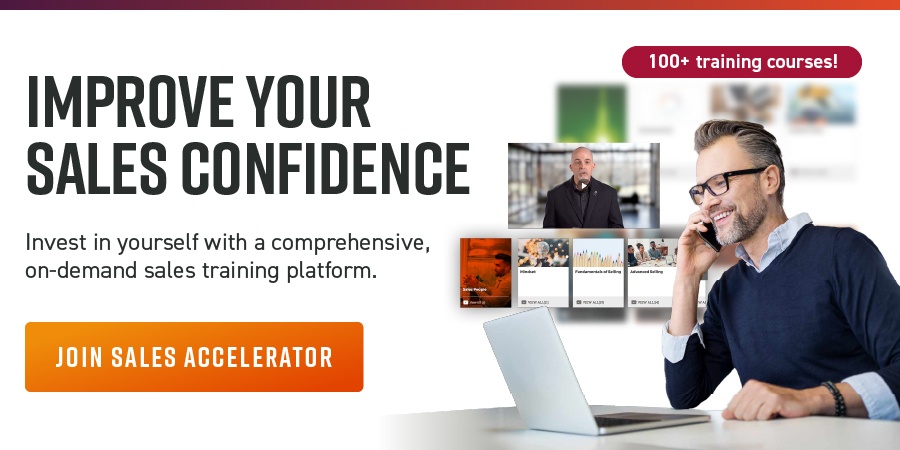Push vs. Pull: Key Strategies in B2B Sales
There are two strategies that sales organizations use to win a client's business. The first, and the most dominant of the two strategies, is a push strategy. An example of a push strategy is when a person sends you an InMail with a pitch about their company and their solution, which is often followed by a link to schedule a meeting. Typically, the person using this approach knows nothing about you to suggest that you might be a prospect.
This approach isn't the same as making a cold call to a prospective client that you know buys what you sell. However, you must have done the work to know that the company you are pursuing can benefit from your solution; otherwise, you’re no different from the person using InMail to pitch.
When a person is using an insight-based approach, they are using a pull strategy. This salesperson creates value by publishing something helpful for their potential clients without asking for anything in return. Done well, a pull strategy is a deposit in a future relationship.
In The Lost Art of Closing: Winning the 10 Commitments That Drive Sales, you will find an approach that changes a cold call from a push strategy to a pull strategy using a sales rule called the Trading Value Rule. This rule requires you to offer your prospective client something of value instead of a pitch about your company and your solutions. The pull rule means you give them the value, even if there is no next step for you. We do this with an executive briefing, which changes the nature of your relationship.
Enhancing Client Outreach with Push Strategies
When a salesperson sends their prospective client an email with a pitch and a request for a meeting, they are using a push strategy. When the salesperson, or more likely, their automation, sends a second email with the first email pasted below, it becomes clear why this push strategy annoys contacts. Now do this three more times, and you will have alienated the person you are trying to schedule a meeting with.
An attempt to qualify your client using an acronym is a push strategy. Using a set of self-oriented questions also alienates your client. These questions will not cause your clients to lean into this conversation you are offering.
Sales organizations that use a legacy approach use the first meeting to position themselves, their company, and their solutions, trying to convince the prospective client to buy from them. What is unfortunate for these push-oriented sales professionals is that it creates no value for your contact and positions you as a commodity, as you have provided the same conversation as your competitors.
When you ask your client about their problem and their pain points, only to allow you to suggest your solution, you are using a push strategy. This is not discovery; it is the opposite of discovery. In a modern sales approach, your discovery would require you to help your client to discover what they need to know to be able to make a change that would improve their outcomes.
Maximizing Effectiveness with Pull Strategies in Sales
Covey taught us that we should make deposits in our relationships, and commercial relationships benefit from these deposits you make. Instead of sending a pitch for a meeting, your email can provide some important insight that will benefit your contact, even if they don’t meet with you. By investing in the relationship, you show yourself to be someone who knows things that will help the client succeed in making a change.
The push people believe their approach will deliver a first meeting faster than a pull strategy. It is odd that a person asks for a meeting, only to ask the client if they have the money to buy something that they haven’t even discussed, followed by questioning the person's ability to decide, followed by a need for a timeline. Because you asked for the meeting, you should create value for their client.
Using an executive briefing in a first meeting creates value, first by removing anything that smacks of a push strategy, second by providing your client with an experienced perspective about the trends and forces that prevent them from producing the results they need. Instead of pushing for information, your pull approach causes your client to lean in and share with you what they are experiencing.
You are better positioned to help your contacts with a pull strategy. Because you have greater experience of the buyer’s journey, you are better placed to suggest what your contacts and their task force needs to do to succeed in making a rare decision that they must get right the first time. Consultative selling requires the salesperson to provide counsel, advice, and the recommendations that ensure your contacts succeed.
The Future of Sales: Technology's Impact on Consultative Selling
No human with integrity and a conscience would continue pushing a prospective client relentlessly, alienating their contact. Technology has no soul or conscience, leading sales organizations to outsource what humans are not likely to do.
Push strategies seem to dominate now because the cost is negligible. The real cost accrues to our sisters and brothers in B2B sales. Automation is so pervasive that it is difficult to use email in cold outreach, with decision makers now ignoring all emails from salespeople. Some predatory types have now decided to do for the cold call what the techno brutes did for email.
The good news for you and me is that the pull strategy will differentiate you from your push strategy competitors. The better the experience you provide your clients and your prospective clients, the more you pull them toward you and away from the push salespeople who lack the understanding of how B2B sales works.
You will never win all the clients you want, but you will win every client that wants you. Meditate on this idea.









.jpg?width=768&height=994&name=salescall-planner-ebook-v3-1-cover%20(1).jpg)


